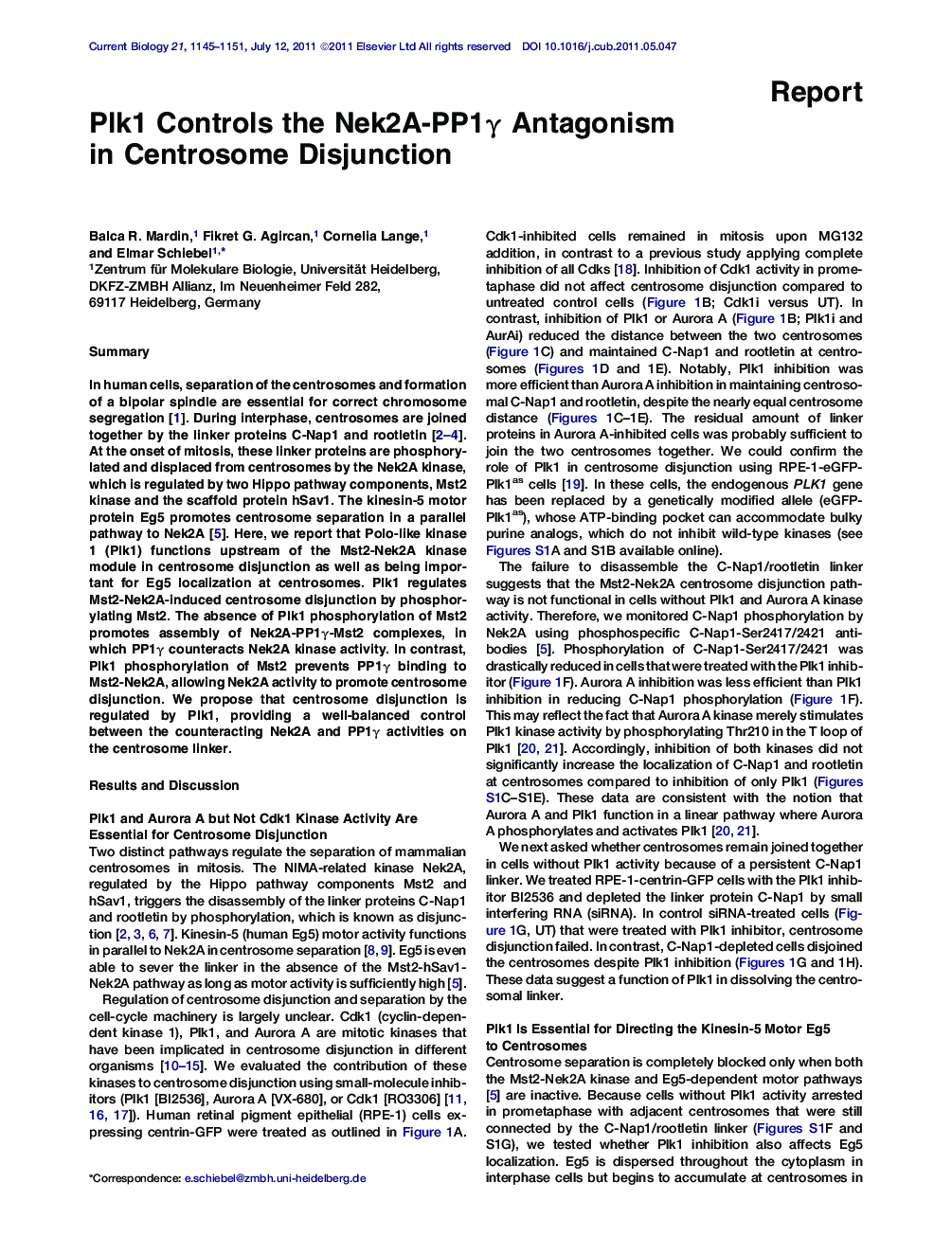| کد مقاله | کد نشریه | سال انتشار | مقاله انگلیسی | نسخه تمام متن |
|---|---|---|---|---|
| 2043250 | 1073332 | 2011 | 7 صفحه PDF | دانلود رایگان |

SummaryIn human cells, separation of the centrosomes and formation of a bipolar spindle are essential for correct chromosome segregation [1]. During interphase, centrosomes are joined together by the linker proteins C-Nap1 and rootletin [2, 3 and 4]. At the onset of mitosis, these linker proteins are phosphorylated and displaced from centrosomes by the Nek2A kinase, which is regulated by two Hippo pathway components, Mst2 kinase and the scaffold protein hSav1. The kinesin-5 motor protein Eg5 promotes centrosome separation in a parallel pathway to Nek2A [5]. Here, we report that Polo-like kinase 1 (Plk1) functions upstream of the Mst2-Nek2A kinase module in centrosome disjunction as well as being important for Eg5 localization at centrosomes. Plk1 regulates Mst2-Nek2A-induced centrosome disjunction by phosphorylating Mst2. The absence of Plk1 phosphorylation of Mst2 promotes assembly of Nek2A-PP1γ-Mst2 complexes, in which PP1γ counteracts Nek2A kinase activity. In contrast, Plk1 phosphorylation of Mst2 prevents PP1γ binding to Mst2-Nek2A, allowing Nek2A activity to promote centrosome disjunction. We propose that centrosome disjunction is regulated by Plk1, providing a well-balanced control between the counteracting Nek2A and PP1γ activities on the centrosome linker.
Graphical AbstractFigure optionsDownload high-quality image (180 K)Download as PowerPoint slideHighlights
► Plk1 activity is crucial for centrosome separation
► Plk1 is important for Eg5 targeting to centrosomes
► Plk1 controls Mst2-Nek2 module via phosphorylation
► Centrosome disjunction is regulated by counteracting activities of Nek2A and PP1γ
Journal: - Volume 21, Issue 13, 12 July 2011, Pages 1145–1151